It looks like you're using an Ad Blocker.
Please white-list or disable AboveTopSecret.com in your ad-blocking tool.
Thank you.
Some features of ATS will be disabled while you continue to use an ad-blocker.
share:
Here are two recent pictures taken from different sources.
The first is a picture of Saturn that was recently shot by Hubble. The level of detail and the subtle colors are astonishing!
The second is a photo of Comet Neowise taken from the Kancamangus Highway in the White Mountains of NH. I've driven that highway many times and it's always beautiful in that mountain range, but add in Neowise and it becomes spectacular!
BTW - I thought the only good views of Neowise were going to be found in more southern places, but what do I know?
Enjoy!
Here's Saturn:
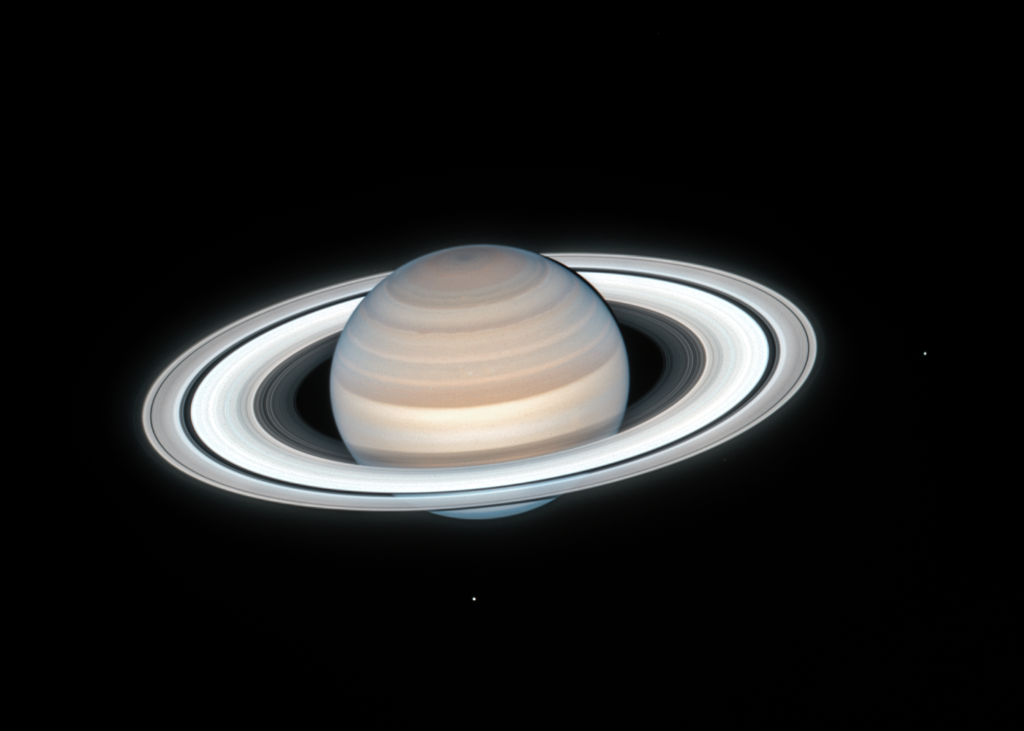
And here's Neowise:

The first is a picture of Saturn that was recently shot by Hubble. The level of detail and the subtle colors are astonishing!
The second is a photo of Comet Neowise taken from the Kancamangus Highway in the White Mountains of NH. I've driven that highway many times and it's always beautiful in that mountain range, but add in Neowise and it becomes spectacular!
BTW - I thought the only good views of Neowise were going to be found in more southern places, but what do I know?
Enjoy!
Here's Saturn:

And here's Neowise:

a reply to: Riffrafter
I was never able to get a good look at Neowise and that annoys me a ton, thank goodness so many great pictures were taken.
I was never able to get a good look at Neowise and that annoys me a ton, thank goodness so many great pictures were taken.
a reply to: Riffrafter
With quite a bit of post-processing. It should be noted. It doesn't look like that to the naked eye.
Very beautiful, all the same.
but add in Neowise and it becomes spectacular!
With quite a bit of post-processing. It should be noted. It doesn't look like that to the naked eye.
Very beautiful, all the same.
originally posted by: Macenroe82
a reply to: Phage
Very true.
The best view I got of it was at 4:30 am just before the sun started coming up, while on the highway headed to work.
It was very bright that morning.
It looked like a rip in the early morning sky.
Lucky man!
Where was this?
a reply to: Riffrafter
I live in Pittsburgh Pennsylvania. I could not see Neowise with the naked eye. But I made a few adjustments to my ISO and varied exposure to 3 5 and as long as 30 seconds. Once i dialed in where to point... it was cake.
First up is my favorite one. I got the international Space station to the top, Neowise and a Boeing 717 on approach to Pittsburgh International Airport at 9:40 pm.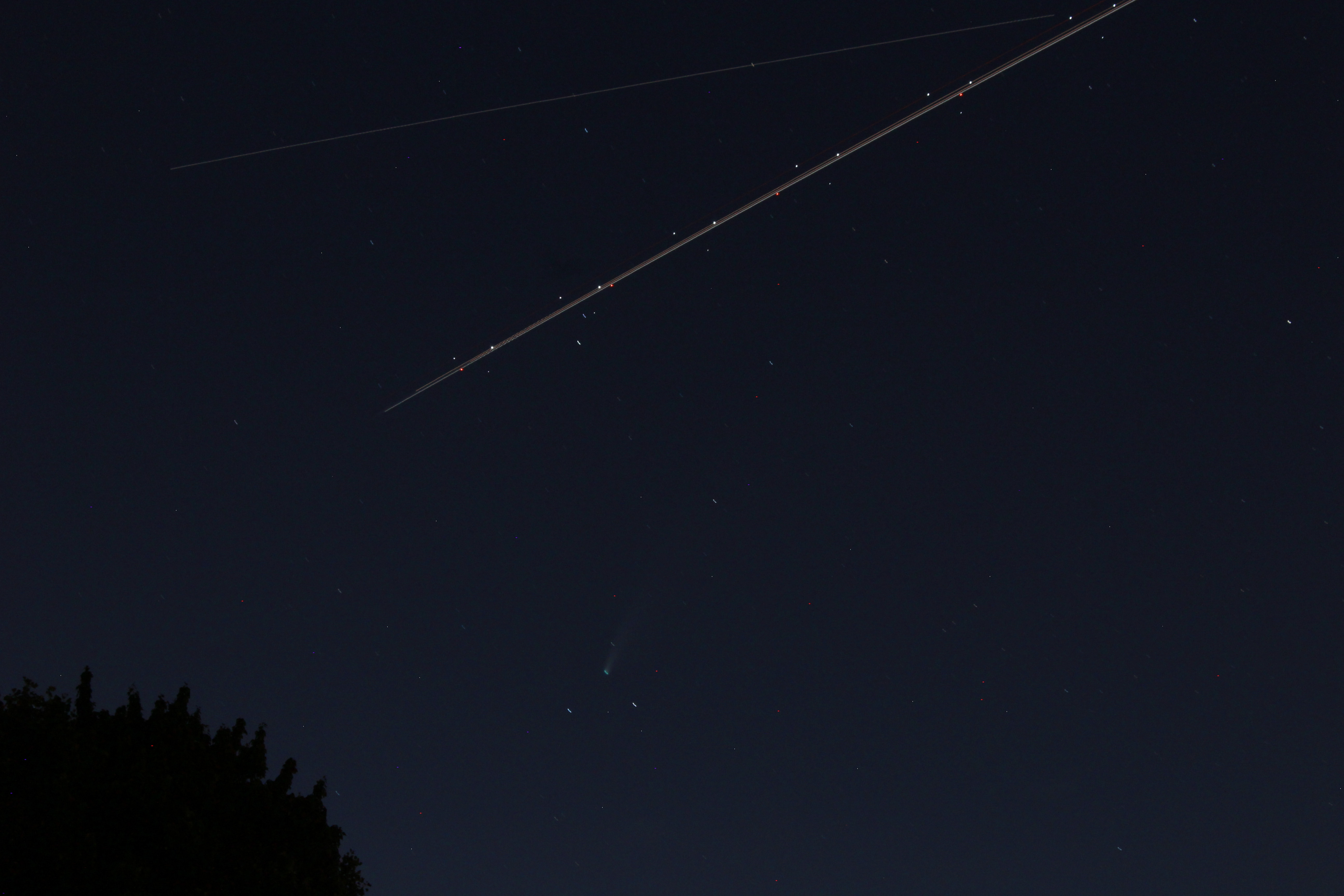
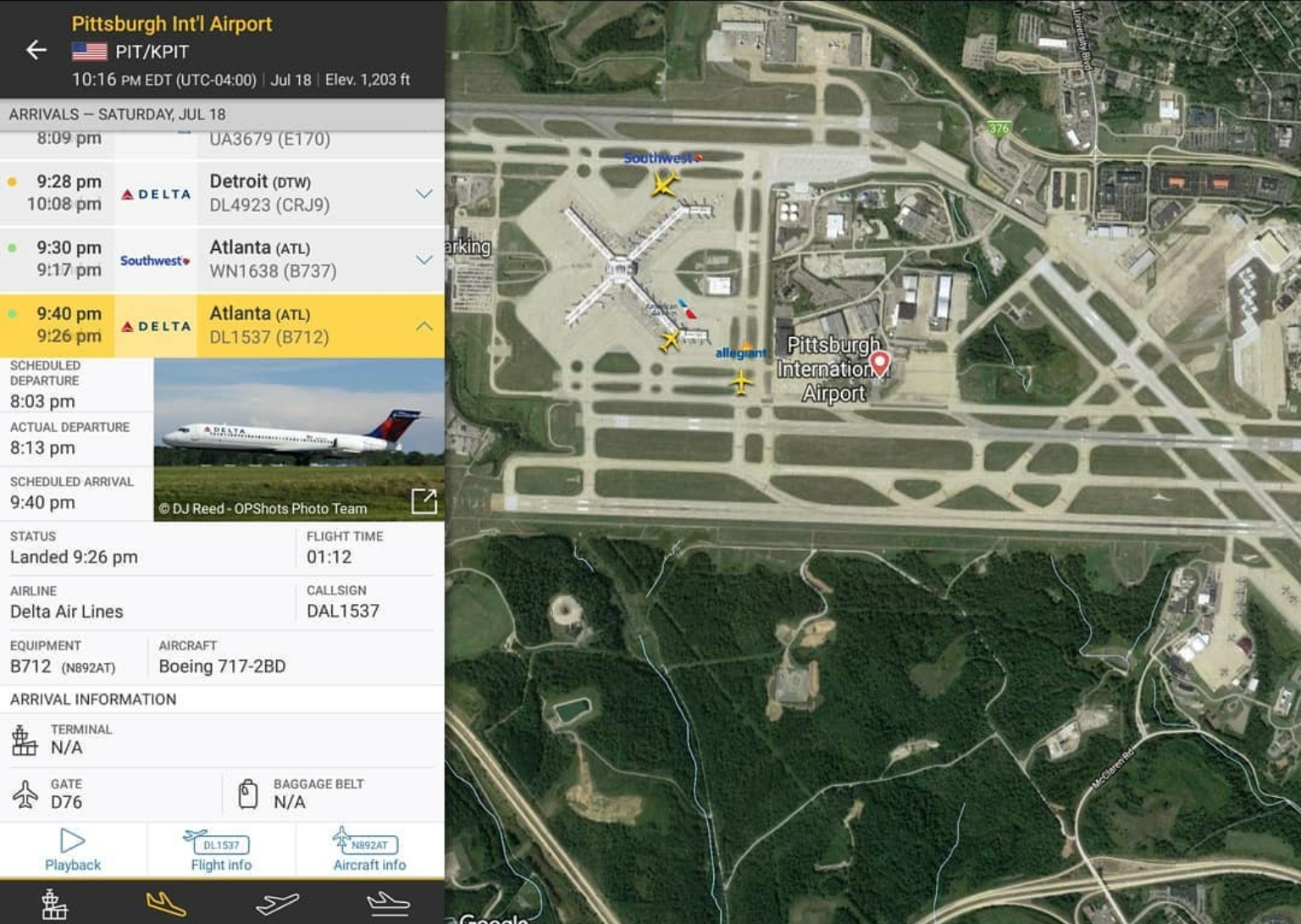
Here's Southwest Airlines long exposure with Neowise.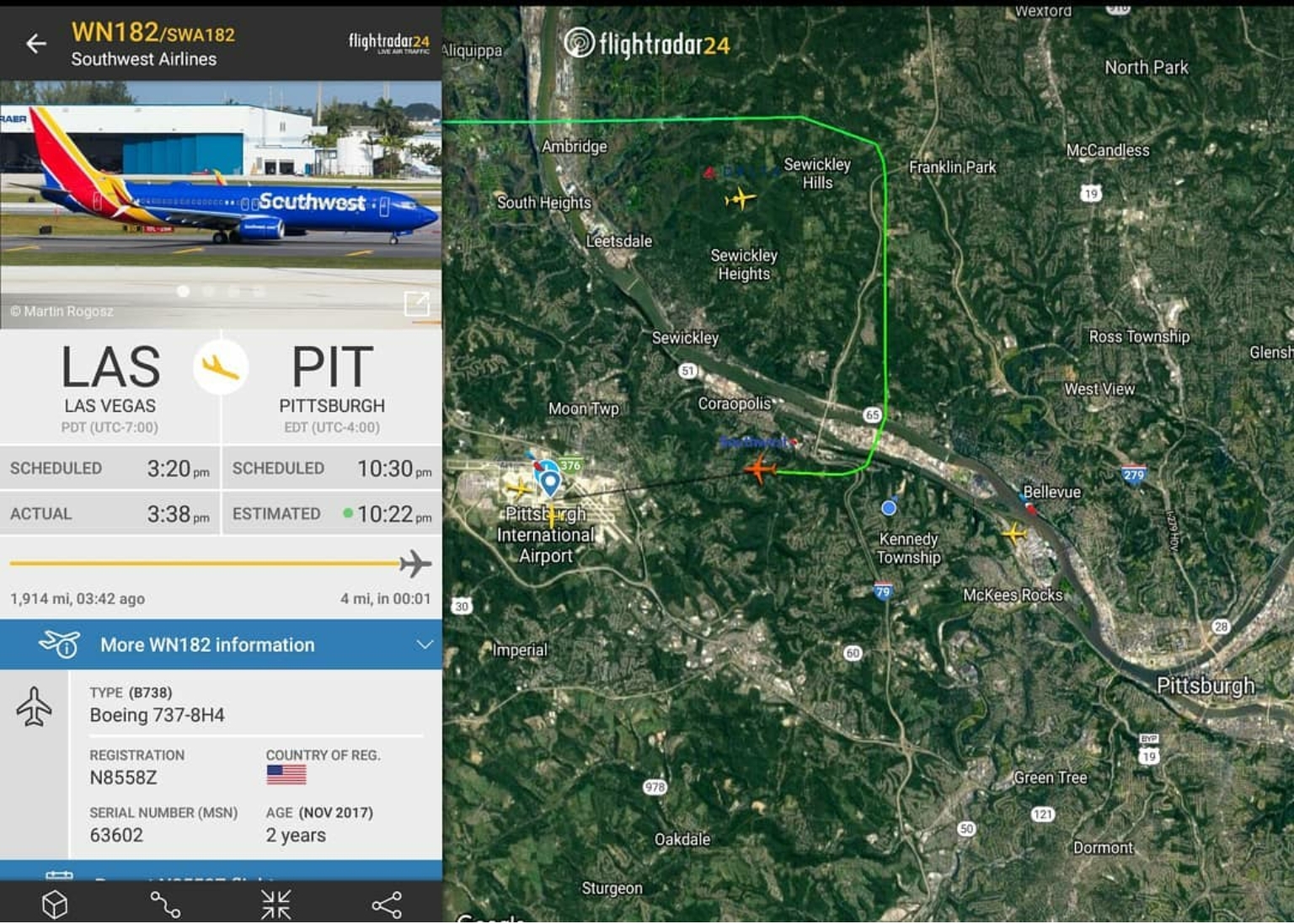
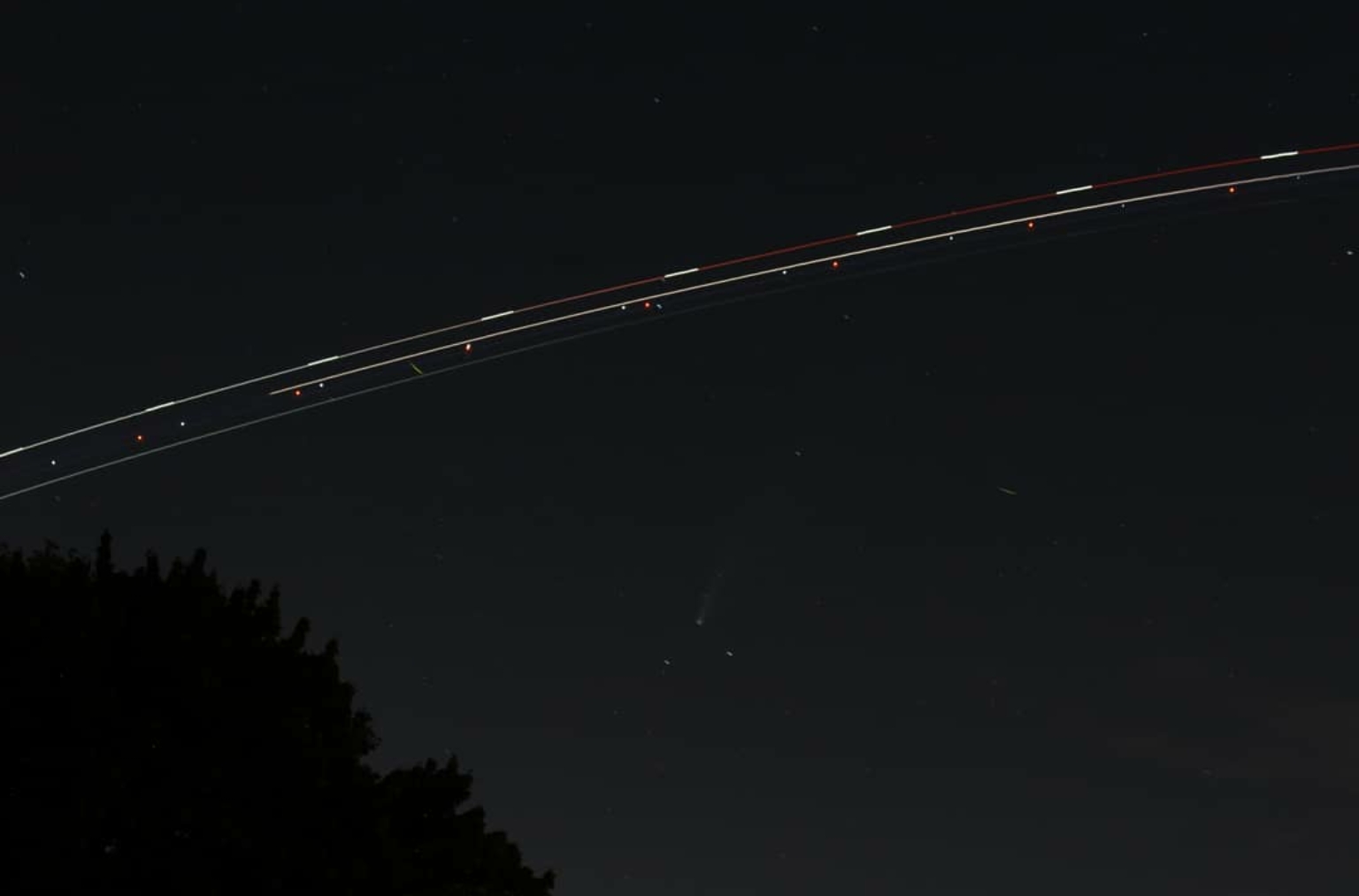
Here are the few of 300+ I took over 3 night's
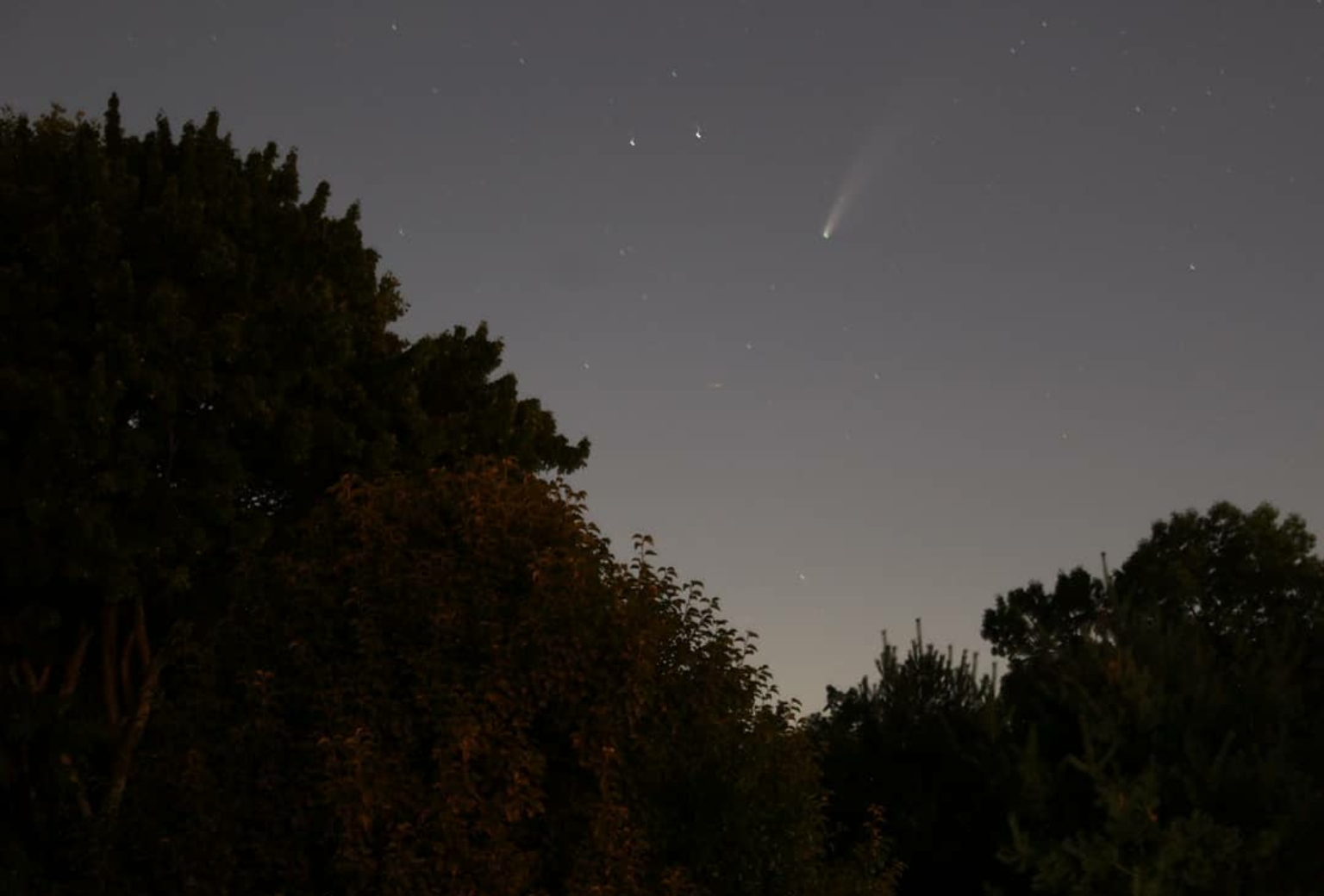
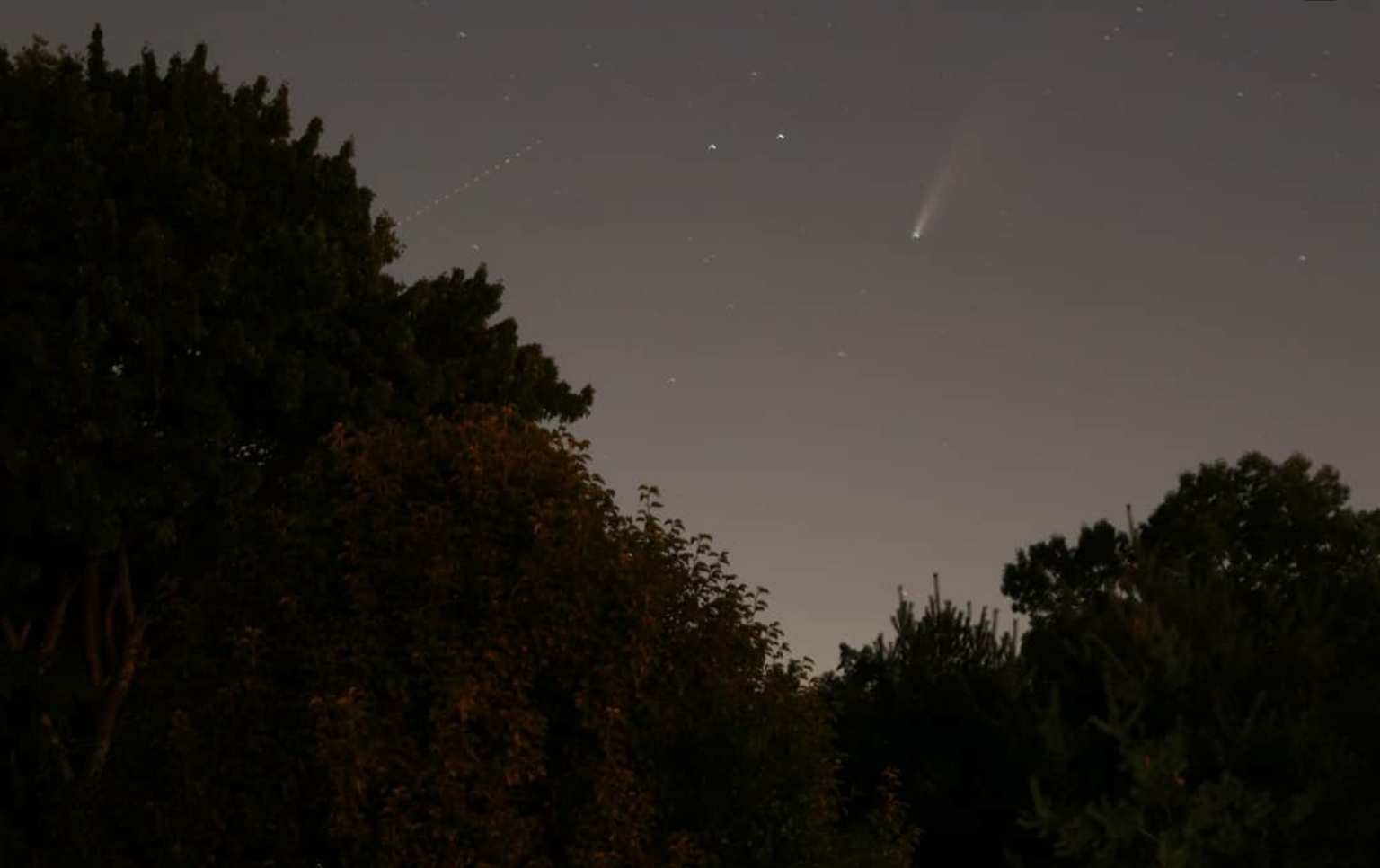
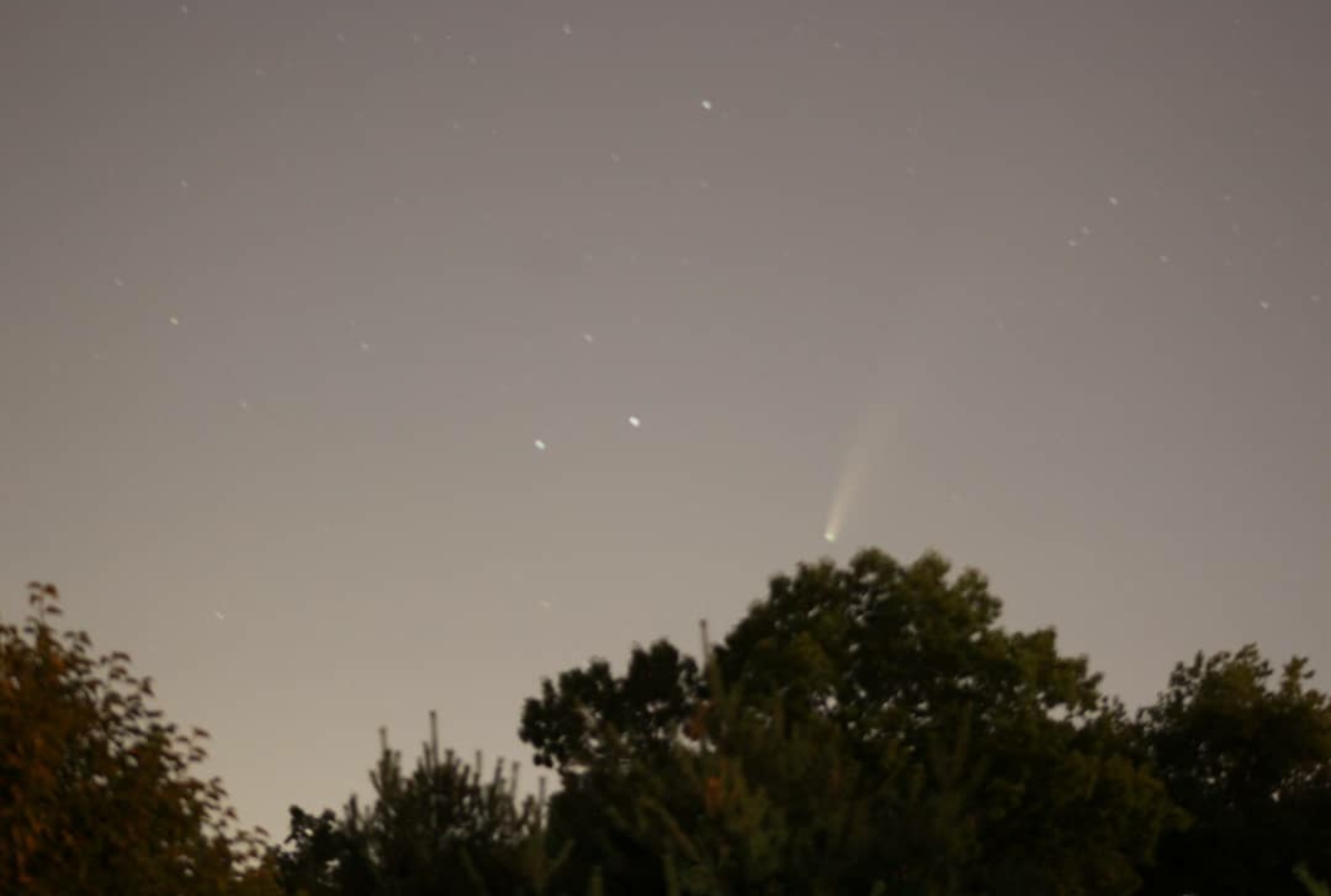
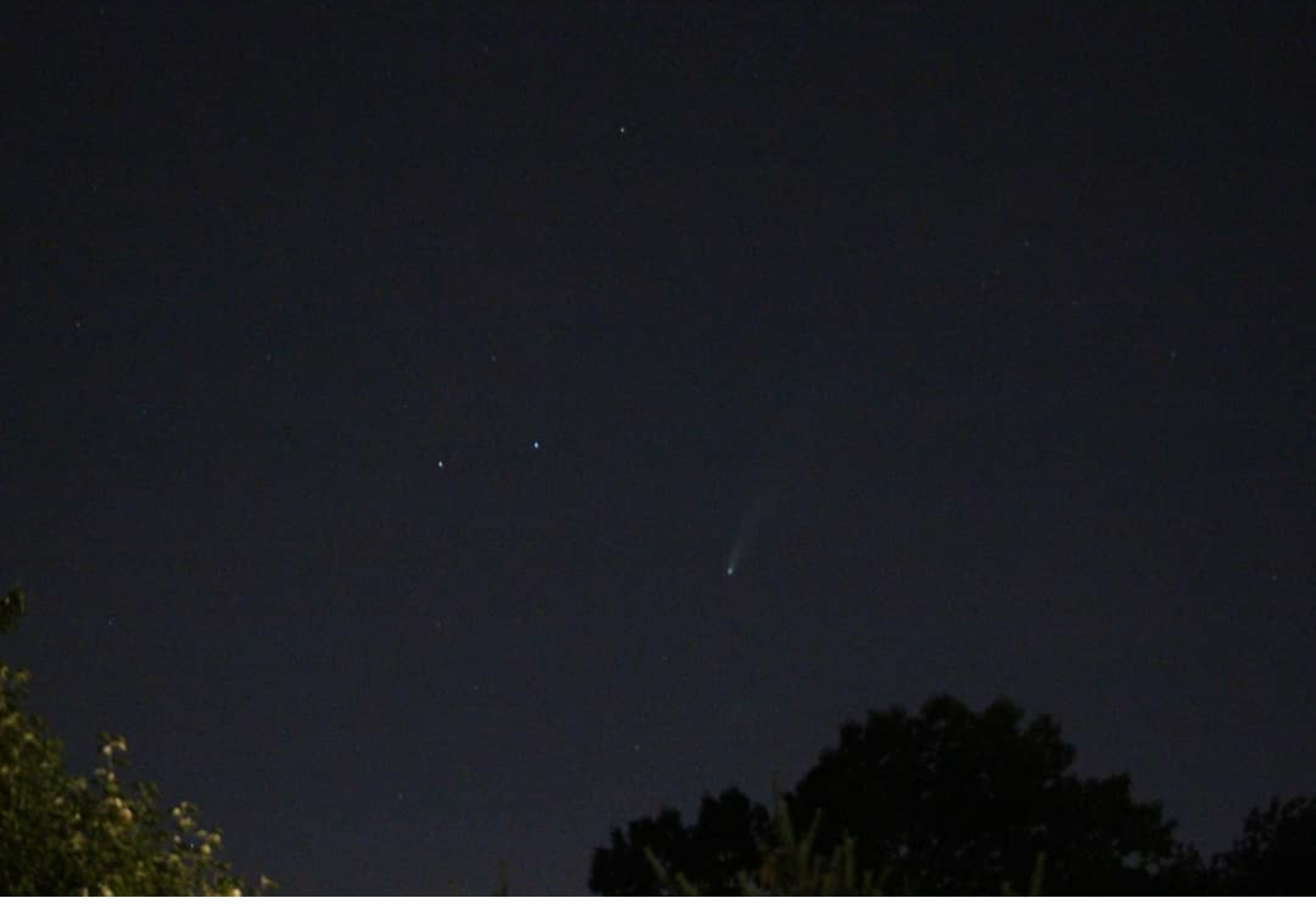
I live in Pittsburgh Pennsylvania. I could not see Neowise with the naked eye. But I made a few adjustments to my ISO and varied exposure to 3 5 and as long as 30 seconds. Once i dialed in where to point... it was cake.
First up is my favorite one. I got the international Space station to the top, Neowise and a Boeing 717 on approach to Pittsburgh International Airport at 9:40 pm.


Here's Southwest Airlines long exposure with Neowise.


Here are the few of 300+ I took over 3 night's




edit on 3-8-2020 by Bigburgh because: (no
reason given)
My friend mark lives down in Shenandoah valley. He has a way better camera and was willing to drive darn near everywhere he could to get a good
shot.
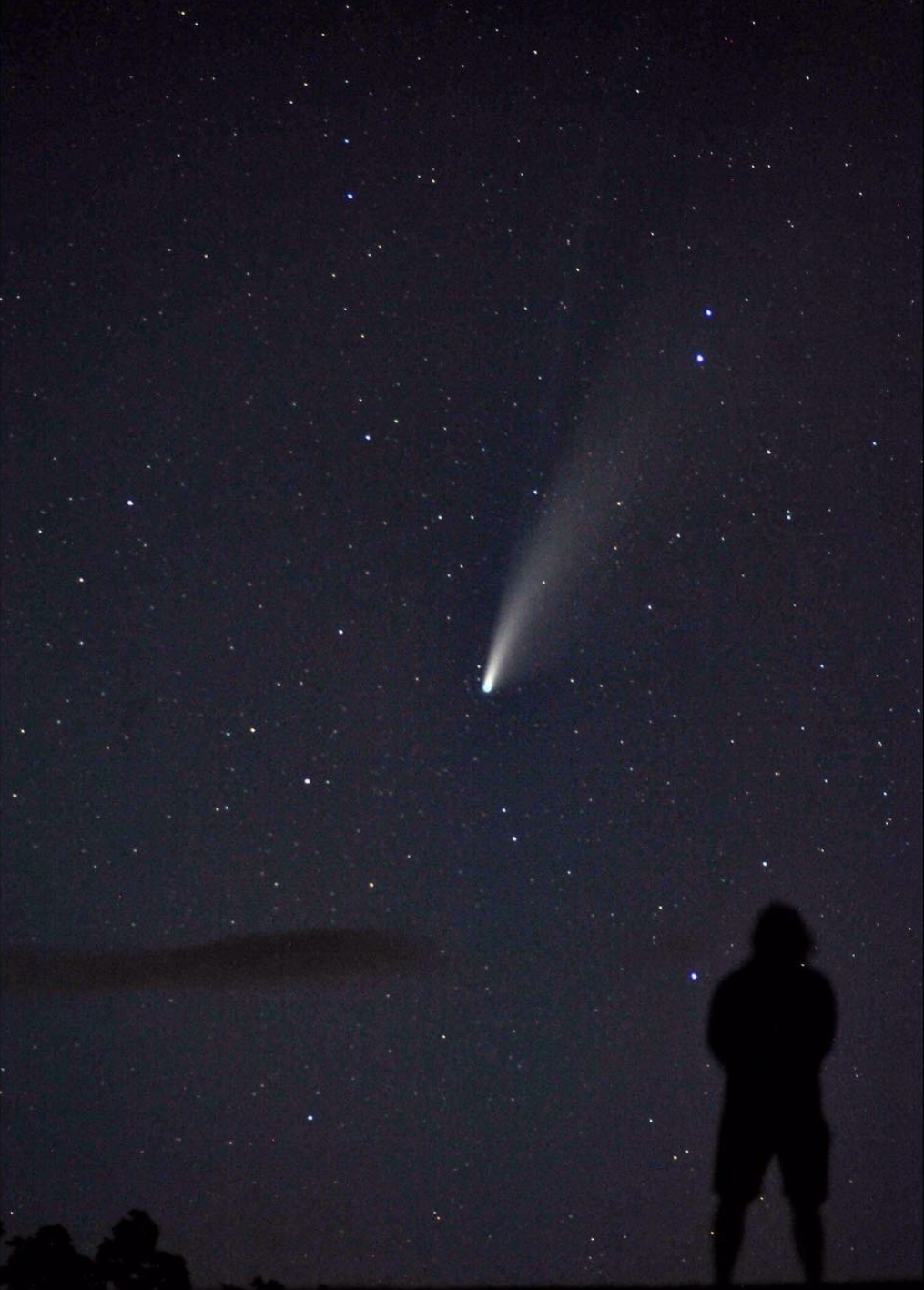 off his IG.
off his IG.

originally posted by: Phage
a reply to: Bigburgh
That's nice.
No post processing?
No, i don't have a program or the knowhow to post process. They are done only with the camera, raw if you will. ATS won't let me upload the originals from this tablet due to size. I had to screenshot my own Instagram and present here to ATS. The quality doesn't cut it. As for Mark, I do know he does post edit.
Edit: he also has a Bluetooth, hence being able to take a pic of himself and comet Neowise.
edit on 3-8-2020 by Bigburgh because: (no reason given)
a reply to: Riffrafter
No stars behind Saturn.
Thousands of stars behind comet Neowise.
Seems like it should be OPPOSITE.
No stars behind Saturn.
Thousands of stars behind comet Neowise.
Seems like it should be OPPOSITE.
a reply to: Riffrafter
2 hours North of Thunder Bay Ontario, headed to the mine site I work at.
Very remote location.
No cell phone coverage after being in the highway for 15 minutes.
The only days you see vehicle in the road are early Tuesday mornings, or Monday afternoons.
Both days are shift change.
2 hours North of Thunder Bay Ontario, headed to the mine site I work at.
Very remote location.
No cell phone coverage after being in the highway for 15 minutes.
The only days you see vehicle in the road are early Tuesday mornings, or Monday afternoons.
Both days are shift change.
a reply to: carewemust
Start here:
How many degrees of view does each image cover?
Start here:
How many degrees of view does each image cover?
edit on 8/3/2020 by Phage because: (no reason given)
originally posted by: carewemust
a reply to: Riffrafter
No stars behind Saturn.
Thousands of stars behind comet Neowise.
Seems like it should be OPPOSITE.
Ah, the good old "why no stars" debate...
Saturn is a huge planet lit by the Sun, easily visible to the naked eye. They had to use a fairly short exposure to take a picture of it, hence no stars.
Neowise is much fainter and requires a long expsure.
a reply to: Phage
Yes i understand not seeing just right left up down from a tight prospective.
Off subject but it made me think of this.
Damn, paywall
www.nationalgeographic.com...
"Apr 24, 2015 · In 1995, astronomer Bob Williams wanted to point the Hubble Space Telescope at a patch of sky filled with absolutely nothing ... ( Robert Williams and the Hubble Deep Field Team (STScI) and NASA)."
Scientists pointed Hubble at a dead spot that light is not seen. Much like i was told to look below the Big Dipper for Neowise. With the right optics you can achieve your goal. Still I did not see with my naked eye, but it was there.
Music is calming...
I would like to state that I thought Hubble was directed at a point in space and the shutter was left open for a month. I must be mistaken as i can't find nothing but the 100 hours capture.
Yes i understand not seeing just right left up down from a tight prospective.
Off subject but it made me think of this.
Damn, paywall
www.nationalgeographic.com...
"Apr 24, 2015 · In 1995, astronomer Bob Williams wanted to point the Hubble Space Telescope at a patch of sky filled with absolutely nothing ... ( Robert Williams and the Hubble Deep Field Team (STScI) and NASA)."
Scientists pointed Hubble at a dead spot that light is not seen. Much like i was told to look below the Big Dipper for Neowise. With the right optics you can achieve your goal. Still I did not see with my naked eye, but it was there.
Music is calming...
I would like to state that I thought Hubble was directed at a point in space and the shutter was left open for a month. I must be mistaken as i can't find nothing but the 100 hours capture.
originally posted by: Phage
a reply to: carewemust
Start here:
How many degrees of view does each image cover?
Which instrument is better with depth/distance? I saw a Hubble image with something like 1,000 stars and galaxies per square inch.
originally posted by: wildespace
originally posted by: carewemust
a reply to: Riffrafter
No stars behind Saturn.
Thousands of stars behind comet Neowise.
Seems like it should be OPPOSITE.
Ah, the good old "why no stars" debate...
Saturn is a huge planet lit by the Sun, easily visible to the naked eye. They had to use a fairly short exposure to take a picture of it, hence no stars.
Neowise is much fainter and requires a long expsure.
That's weird. I see a lot of stars immediately when I look up at the sky. That's a short exposure isn't it?
a reply to: Bigburgh
WOW! That video left me mind-blown.
From what I've read, we could travel as fast as what's depicted by that animation our entire life, we'd die of old age still passing through galaxies.
WOW! That video left me mind-blown.
From what I've read, we could travel as fast as what's depicted by that animation our entire life, we'd die of old age still passing through galaxies.
edit on 8/3/2020 by carewemust because: (no reason given)
a reply to: carewemust
How many stars do you see right next to Saturn when you look at it in the sky? Do you even know where Saturn is?
How long was the Hubble deep field exposure? I'll tell you. It took four months to get it. You cannot see much of anything that is in that image, no matter how good your eyes are.
I saw a Hubble image with something like 1,000 stars and galaxies per square inch.
How many stars do you see right next to Saturn when you look at it in the sky? Do you even know where Saturn is?
How long was the Hubble deep field exposure? I'll tell you. It took four months to get it. You cannot see much of anything that is in that image, no matter how good your eyes are.
edit on 8/3/2020 by Phage because: (no reason given)
originally posted by: Phage
a reply to: carewemust
I saw a Hubble image with something like 1,000 stars and galaxies per square inch.
How many stars do you see right next to Saturn when you look at it in the sky? How long was the Hubble deep field exposure? I'll tell you. It took four months to get it. You cannot see much of anything that is in that image.
Bigburgh has explained it nicely. No more questions.
Hubble is AMAZING. Months' long exposure with no blur, even though everything is moving!
edit on 8/3/2020 by carewemust because: (no reason
given)
new topics
-
Watts home paranormal activity
Paranormal Studies: 7 hours ago -
So, what is really going on in South Korea ?
World War Three: 8 hours ago -
Congress Says the FBI is Covering Up Vital Info on the Jan 5th 2021 D.C. Pipe Bombs at RNC-DNC.
Political Conspiracies: 8 hours ago -
The trial on kids was stopped
Medical Issues & Conspiracies: 11 hours ago
top topics
-
Biden to award Presidential Citizens Medal to Liz Cheney and Bennie Thompson
US Political Madness: 16 hours ago, 11 flags -
Biden Has New Bizarre Injuries to His Face
Politicians & People: 14 hours ago, 11 flags -
Congress Says the FBI is Covering Up Vital Info on the Jan 5th 2021 D.C. Pipe Bombs at RNC-DNC.
Political Conspiracies: 8 hours ago, 10 flags -
The trial on kids was stopped
Medical Issues & Conspiracies: 11 hours ago, 9 flags -
Orbs Appear And Form Triangle On Live Cam.
Aliens and UFOs: 13 hours ago, 6 flags -
So, what is really going on in South Korea ?
World War Three: 8 hours ago, 6 flags -
Elon Musk Calls for Tommy Robinson to be Freed - and Takes a Dig at Starmer
Politicians & People: 15 hours ago, 5 flags -
Something is not adding up in regards to the H-1B commotion
General Conspiracies: 15 hours ago, 5 flags -
Watts home paranormal activity
Paranormal Studies: 7 hours ago, 3 flags
active topics
-
Congress Says the FBI is Covering Up Vital Info on the Jan 5th 2021 D.C. Pipe Bombs at RNC-DNC.
Political Conspiracies • 23 • : SteamyAmerican -
So, what is really going on in South Korea ?
World War Three • 7 • : MindBodySpiritComplex -
Post A Funny (T&C Friendly) Pic Part IV: The LOL awakens!
General Chit Chat • 7982 • : KrustyKrab -
Tesla Cybertruck Explodes in Front of Trump Hotel in Las Vegas
Mainstream News • 154 • : Guyfriday -
Ukraine halts transit of Russian gas to Europe after a prewar deal expired
Political Conspiracies • 115 • : Flyingclaydisk -
Biden Has New Bizarre Injuries to His Face
Politicians & People • 11 • : berbofthegreen -
The trial on kids was stopped
Medical Issues & Conspiracies • 11 • : annonentity -
-@TH3WH17ERABB17- -Q- ---TIME TO SHOW THE WORLD--- -Part- --44--
Dissecting Disinformation • 3906 • : duncanagain -
Biden to award Presidential Citizens Medal to Liz Cheney and Bennie Thompson
US Political Madness • 14 • : WeMustCare -
The C.D.C. Says There Was NO INFLUENZA Worth Reporting for the 2020-2021 Flu Season.
Diseases and Pandemics • 98 • : WeMustCare
